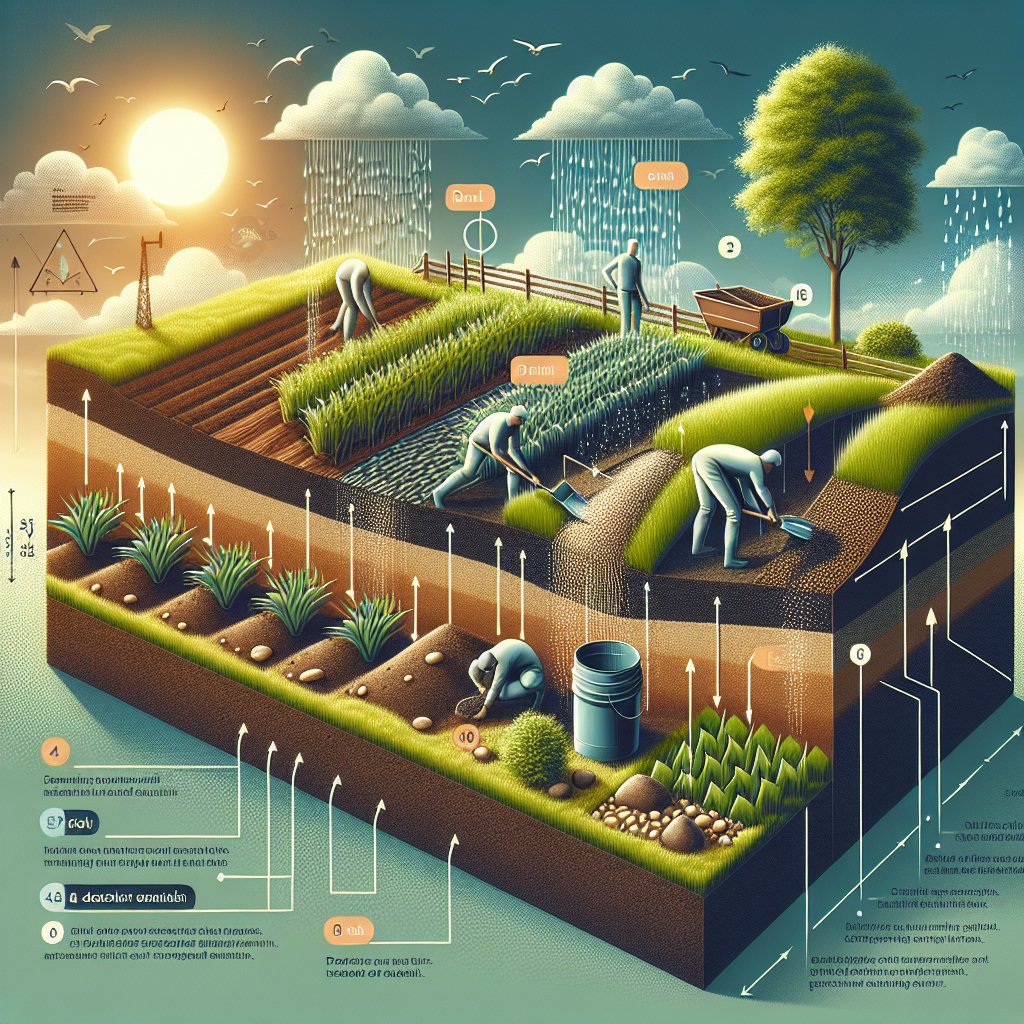
Mulching is a vital agricultural practice that plays a significant role in retaining soil moisture, enhancing plant growth, and improving soil health. By understanding how to use mulch effectively, farmers and gardeners can optimize their crop yields and contribute to sustainable farming practices. This article delves into the various types of mulch, their benefits, and practical tips for effective application.
Understanding Mulch and Its Benefits
Mulch is a layer of material applied to the surface of the soil, primarily to conserve moisture, improve fertility, and reduce weed growth. It can be organic, such as straw, wood chips, and leaves, or inorganic, like plastic sheeting and gravel. Each type of mulch has its unique properties and benefits, making it essential to choose the right one for specific agricultural needs.
Types of Mulch
Organic mulches are derived from natural materials and decompose over time, enriching the soil with nutrients. Common organic mulches include:
- Straw: A lightweight and easily available option, straw is excellent for vegetable gardens and helps prevent soil erosion.
- Wood Chips: These are ideal for perennial gardens and pathways, providing long-lasting coverage and slowly releasing nutrients.
- Leaves: Fallen leaves are a cost-effective mulch that can be used in flower beds and around trees to improve soil structure.
Inorganic mulches, on the other hand, do not decompose and are often used for specific purposes such as temperature regulation and weed control. Examples include:
- Plastic Sheeting: Used in commercial agriculture to warm the soil and suppress weeds, though it requires careful management to prevent environmental harm.
- Gravel: Suitable for decorative purposes and areas where long-term weed suppression is needed, such as driveways and pathways.
Benefits of Mulching
Mulching offers numerous benefits that contribute to healthier plants and more efficient farming practices:
- Moisture Retention: Mulch acts as a barrier, reducing evaporation and maintaining consistent soil moisture levels, which is crucial during dry spells.
- Temperature Regulation: By insulating the soil, mulch helps keep it cooler in the summer and warmer in the winter, creating a more stable environment for plant roots.
- Weed Suppression: A thick layer of mulch blocks sunlight, preventing weed seeds from germinating and reducing the need for chemical herbicides.
- Soil Improvement: As organic mulches decompose, they add organic matter to the soil, enhancing its structure, fertility, and microbial activity.
Practical Tips for Effective Mulching
To maximize the benefits of mulching, it is essential to apply it correctly and maintain it throughout the growing season. Here are some practical tips for effective mulching:
Choosing the Right Mulch
Selecting the appropriate type of mulch depends on several factors, including the type of plants, climate, and specific goals. For instance, vegetable gardens benefit from straw or grass clippings, while ornamental gardens may require wood chips or bark. Consider the following when choosing mulch:
- Plant Type: Different plants have varying mulch requirements. For example, acid-loving plants like blueberries thrive with pine needle mulch.
- Climate: In hot climates, organic mulches are preferable as they help cool the soil, whereas inorganic mulches may be suitable in cooler regions.
- Purpose: Determine whether the primary goal is moisture retention, weed control, or soil improvement, and choose mulch accordingly.
Application Techniques
Proper application of mulch is crucial for its effectiveness. Follow these guidelines to ensure optimal results:
- Thickness: Apply a layer of mulch that is 2-4 inches thick. Too thin a layer will not effectively suppress weeds or retain moisture, while too thick a layer can suffocate plant roots.
- Timing: Apply mulch in the spring after the soil has warmed up, and replenish it in the fall to protect against winter temperatures.
- Coverage: Ensure even coverage around plants, leaving a small gap around the base to prevent rot and pest infestation.
- Maintenance: Regularly check the mulch layer and replenish it as needed, especially after heavy rains or strong winds that may displace it.
Considerations for Organic and Inorganic Mulches
While both organic and inorganic mulches have their advantages, they also come with specific considerations:
- Organic Mulches: These require regular replenishment as they decompose, but they improve soil health over time. Be mindful of potential pests that may be attracted to certain organic materials.
- Inorganic Mulches: These provide long-lasting coverage but do not contribute to soil fertility. Ensure proper disposal or recycling to minimize environmental impact.
Conclusion
Mulching is an indispensable practice in agriculture and gardening, offering numerous benefits that enhance plant growth and soil health. By understanding the different types of mulch and their applications, farmers and gardeners can effectively retain soil moisture, suppress weeds, and improve soil fertility. With careful selection and application, mulch can be a powerful tool in sustainable farming, contributing to healthier crops and a more resilient agricultural ecosystem.

